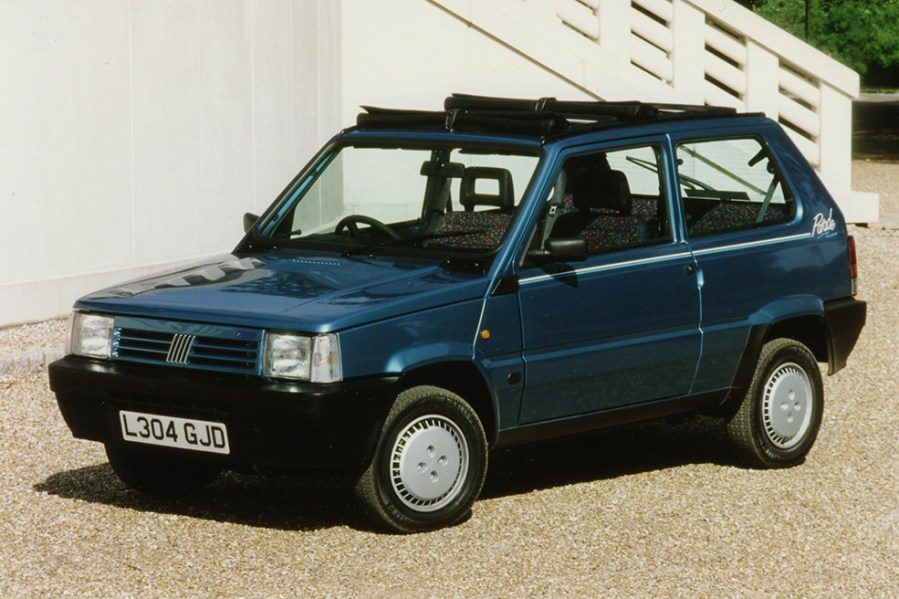Technically in production continuously since 1980 across many generations, the Fiat Panda has finally bowed out as the next chapter begins
The original Fiat Panda first arrived in 1980 and has become a bona fide classic thanks to its utilitarian character, angular Giugiaro design and unpretentious image. Incredibly, while the car was replaced in the UK by the Fiat Uno in 1995, the model remained in production in its native Italy until 2003 and the arrival of the all-new second-generation Panda.
The second-gen car was made in Poland and picked up where its predecessor left off, with a no-frills approach updated for the new millennium. The iconic Panda 4×4 also returned, complete with real off-road ability and resultant cult following, while the Panda 100HP hot hatch became an affordable performance icon in its own right.
The Panda rolled into its third generation in 2011, with production returning to Italy and further improving on the recipe with a new platform, new engines (including a 0.9-litre turbocharged two-cylinder) and greater practicality.
The third-gen car survived until this year following an impressive near 13-year production run – but Fiat has called time as it sets the stage for the all-new, recently revealed Grande Panda. Reports suggest that while the old car has been pulled from sale, existing dealer stock of the old Panda will last until the arrival of the new car in December.

The first-generation Panda was made from 1980 to 2003 but went off sale in the UK in 1995. This is a Mk2 version of the first-generation car

The second-generation Panda was a huge success, built at the brand’s factory in Tychy, Poland

The third-generation Panda was a more grown-up affair but retained the original’s utilitarian appeal (and 4×4 variant)
Fiat Grande Panda: a retro revival
The new Fiat Grande Panda is the long-anticipated reincarnation of the classic Fiat Panda. The new car is a close relative of the latest Citroen C3, with both cars sharing the new ‘Smart Car’ platform that’s set to underpin models across the wider Stellantis group. It’s likely that the next Jeep Renegade will also use the platform along with the forthcoming revived Vauxhall Frontera.
Deliveries are expected to start early in 2025 with prices expected to start at around £15,000, putting the Grande Panda up against value-focused competition from Dacia, MG and others.
The Grande Panda sets itself apart from its French relative with a rugged, squared-off design that’s in-keeping with recent trends for reimagining the designs of the 1980s. Similarities to the Giugiaro-designed original include the iconic roofline and slanted rear window, a clamshell bonnet, a black rectangular grille plus front bumper slit, along with similarly square wheelarches, albeit with extra black cladding more similar to that of the original Panda 4×4.
More modern details include embossed logos on the car’s flanks and rear hatch, as well as on-trend pixel-style lights front and rear. Fiat says these were inspired by the windows of Lingotto, its famous former factory made famous by its rooftop test track and role in The Italian Job. The car’s interior is yet to be shown off but it’s safe to expect a minimalist design with nods to the original’s spartan aesthetic.

Despite the Grande Punto’s SUV-leaning design, it has not been confirmed if a true Panda 4×4 will return; instead, the new car will arrive with front-wheel drive and a choice of petrol or electric drivetrains. Fiat has not confirmed details but both are likely to be shared with the Citroen C3, namely a mild-hybrid 1.2-litre three-cylinder petrol engine or a full-electric setup with up to 203 miles of range.
In a move that reflects the utilitarian nature of the original Panda, the new model is “designed for the needs of customers worldwide” according to Fiat, with the Grande Panda to launch in the Middle East and Africa as well as Europe.
The Grande Panda is set to be the first of many models in a wider Panda range, with a new model expected to arrive every year until 2027 according to Fiat. A range of concept cars revealed earlier this year gave a taste of what to expect, which along with the concept version of the Grande Panda included a family SUV, camper, pickup and Polestar-style fastback. It seems likely that other Stellantis brands will offer related cars in their own ranges but it’s not confirmed.
With Fiat’s sights set on international markets, it could be that the more niche versions may be region-specific offerings – we’ll have to wait to find out.
















